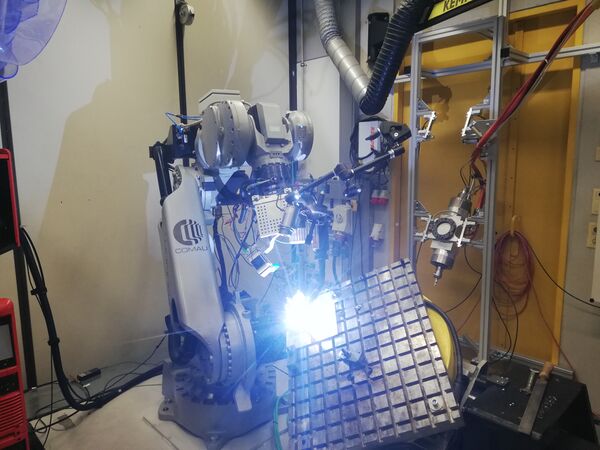Wire-Arc Additive Manufacturing: Unterschied zwischen den Versionen
Zur Navigation springen
Zur Suche springen
(Text aus Suchumleitung) |
KKeine Bearbeitungszusammenfassung |
||
| Zeile 1: | Zeile 1: | ||
{{TODO|Bitte nach Deutsch übersetzen.}} | |||
Wire Arc Additive Manufacturing is based on a wire and an arc. This process enables the cost-efficient manufacturing of large-scale metal parts. | Wire Arc Additive Manufacturing is based on a wire and an arc. This process enables the cost-efficient manufacturing of large-scale metal parts. | ||
It is characterized by high build-up rates and low production costs. However, the process has certain disadvantages. The accuracy of the process and the achievable component complexity is worse than the one for L-PBF and other powder based processes. | It is characterized by high build-up rates and low production costs. However, the process has certain disadvantages. The accuracy of the process and the achievable component complexity is worse than the one for L-PBF and other powder based processes. | ||
[[Datei:robotbased_WAAM.jpg|600px|thumb|left|Robot-based Wire Arc Additive Manufacturing setup at Siemens AG]] | [[Datei:robotbased_WAAM.jpg|600px|thumb|left|Robot-based Wire Arc Additive Manufacturing setup at Siemens AG]] | ||
Version vom 5. August 2022, 12:37 Uhr
🚧 ❬Bitte nach Deutsch übersetzen.❭
Wire Arc Additive Manufacturing is based on a wire and an arc. This process enables the cost-efficient manufacturing of large-scale metal parts. It is characterized by high build-up rates and low production costs. However, the process has certain disadvantages. The accuracy of the process and the achievable component complexity is worse than the one for L-PBF and other powder based processes.
